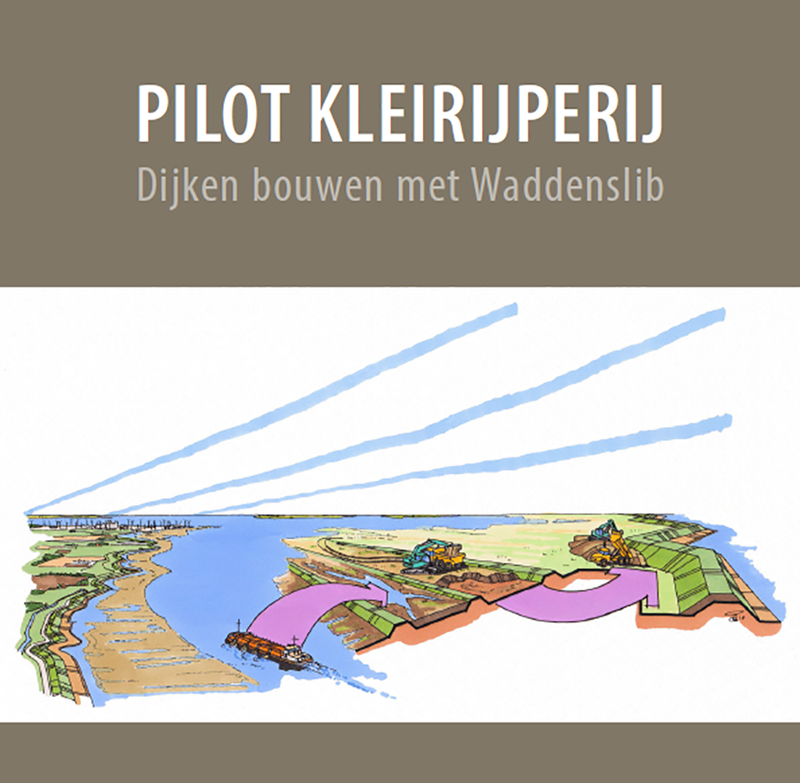Use in dyke construction reinforcement
The Port of Delfzijl is located in the Ems River estuary near its confluence with the Wadden Sea and the North Sea. Since a few decades the turbidity caused by the Ems River has been increasing due to increase in suspended sediments concentration (van Maren et al. 2015), leading to an increase in required maintenance dredging for the harbours in the Ems Estuary, such as Delfzijl. At the same time, clay needed to maintain or strengthen the dikes in the area is bought and brought in from distant locations.
With this challenges in mind, EcoShape (a Dutch consortium to develop and apply knowledge related to Building with Nature solutions) cooperates with the Province of Groningen, the waterboard ‘Hunze en Aa’s’, the Delfzijl harbour developer Groningen Seaports, nature organisation Groninger Landschap and the Dutch ministry of Infrastructure and Water Management to initiate the ‘Pilot Kleirijperij’. This pilot consists of dredging mostly fine sediments from the Delfzijl harbour and the nature area Polder Breebaart, hydraulically transport it on land and deposit it in a series of tests cells. Here the sediment is ripening for about four years until this clay soil is ready to be utilized for dike reinforcement (Figure 1). The pilot includes 24 test cells, covering an area of about 22 ha and a varying depth with a maximum of 1.5 m. Various deposition and ripening strategies will be tested in the cells such as different deposition layer thickness, dry or wet consolidation, seeding vegetation or enhancing ripening by mechanical tools. During ripening, the cells will be monitored to test consolidation and desalination rates.
The ultimate objective of this pilot is to test how different ripening strategies can deliver quality clay soil for dike construction cost effectively, for possible upscale follow-up. At its termination, the pilot will have to deliver 70,000 m3 of clay to be utilized to strengthen the green dike, as part of the parallel pilot ‘Brede Groene Dijk’. This presents an attractive win-win situation which takes advantage of Building with Nature processes such as evaporation, consolidation and ripening, to turn sediment into clay soil, and at the same time to improve the water quality of the Eems River.
Graphical information:

References/web links
- https://www.ecoshape.org/en/projects/clay-ripening-pilot-project/
- Eekelen, E.M.M. van, Sittoni, L., Goot, F. van der and Nieboer H.E. (2017) “The Living Lab for Mud: integrated sediment management based on Building with Nature concepts”, CEDA Dredging Days 2017, Rotterdam.
- Van Maren, D.S., Van Kessel, T., Cronin, K. and Sittoni, L. (2015) “The impact of channel deepening and dredging on estuarine sediment concentration.” Continental Shelf Research, Volume 95, 1 March 2015, Pages 1–14.
- https://www.hunzeenaas.nl/werk-in-uitvoering/Paginas/Brede-Groene-Dijk.aspx
- https://www.wur.nl/nl/show/Een-brede-groene-dijk-langs-de-Dollard.htm
- https://rijkewaddenzee.nl/wp-content/uploads/2016/07/ED2050_Rapport_DEF.pdf